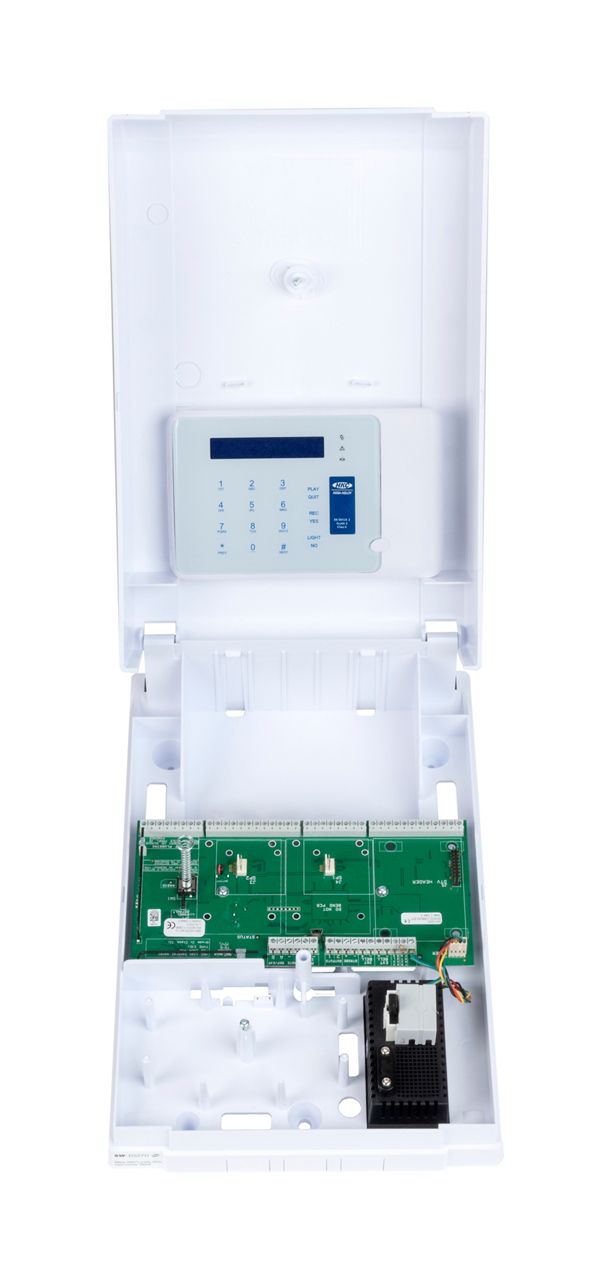Navigating the Security Landscape: Intruder Alarms - Wireless vs. Wired Systems


Both technologies come with their unique set of advantages and considerations, making it essential for specifiers or consumers to carefully evaluate their particular needs and preferences before making a decision.
When it comes to designing an intruder alarm system, one of the major considerations is whether the system will be wired or wireless.
The reason a wired system is used as opposed to a wireless system or visa versa maybe to do with the structure or layout of the building, accessibility, or aesthetics.
Both technologies come with their unique set of advantages and considerations, making it essential for specifiers or consumers to carefully evaluate their particular needs and preferences before making a decision.
Wireless Intruder Alarms:
Wireless intruder alarm systems have gained popularity for their flexibility and ease of installation. These systems utilise radio frequency signals to communicate between sensors, control panels, and other components, eliminating the need for extensive wiring. This characteristic makes wireless systems an excellent choice for retrofitting existing structures or locations where wiring may be challenging.
Advantages:
1. Easy Installation: The absence of wires simplifies the installation process, reduces install time and minimises install impact.
2. Flexibility: Wireless devices can be more easily fitted and wireless systems are adaptable to changes in the environment, allowing for easy relocation or expansion.
3. Aesthetics: With no visible wiring, wireless systems are aesthetically pleasing and maintain the integrity of the property's appearance.
Considerations:
1. Battery Dependence: Wireless devices rely on batteries, requiring periodic replacements and maintenance (although battery expectancy can be up to 3 years+ depending on the system.
2. Signal Interference: Radio frequency interference from other electronic devices or physical obstacles can impact the signal strength of a wireless system.
Wired Intruder Alarms:
Wired intruder alarm systems, on the other hand, have been a traditional choice for many due to their robust and reliable nature. These systems use physical cables to connect sensors and detectors to the central control panel. This method provides a physical communication network.
Advantages:
1. No Battery Concerns: Since wired components are connected to the power source, there's no need for batteries, eliminating concerns about battery life.
2. Signal Interference: As a wired system does not utilise wireless technology, they are less susceptible to interference and signal loss.
Considerations:
1. Installation Challenges: The installation of wired a system can be labour-intensive and the running of cabling can also be challenging, especially in pre-existing structures.
2. Limited Flexibility: Changes in the layout of a property may necessitate rewiring, making wired systems less flexible than their wireless counterparts.
3. Aesthetic Impact: The presence of visible wires can affect the visual appeal of a space, especially in residential settings.
Choosing the Right System for Different Applications:
1. Residential Properties: For homeowners seeking a seamless and aesthetically pleasing solution, wireless intruder alarms are often the preferred choice. Easy system installation and adaptability to changes make them highly suitable for residential applications.
2. Commercial and Industrial Spaces: Often with easier cable route availability, wired intruder alarm systems are the preferred for commercial and industrial applications.
However, using wireless technology these property types provides flexibility beyond that of a wired system.
3. Mixed-Use Properties: Depending on the specific needs of a mixed-use property, a combination of wireless and wired systems may offer a balanced solution, addressing different requirements in various sections of the property.
Ultimately the choice between wireless and wired intruder alarm systems demands careful consideration of specific requirements. While each technology brings its own set of advantages and considerations, innovative solutions from HKC Security bridge the gap, providing a comprehensive solution that meets diverse needs.
HKC’s SW-10270 panel is a hybrid solution with onboard wireless and wired capabilities which can both be expanded ensuring that security is not a compromise but a robust integration of cutting-edge features.
For installers, gaining the HKC approved installer status adds a layer of assurance to consumers. These professionals are thoroughly trained to consult on the design and implementation of HKC security systems for both residential and commercial properties.
Whether it's the seamless installation of wireless systems in homes or the meticulous setup of wired systems in industrial complexes, HKC's professional training brings a wealth of knowledge and precision to apply to every project.
The fusion of innovation and professional expertise ensures that HKC is the smart choice for installers seeking to provide top-tier security solutions.
If you’re a professional installer and want to find out more about HKCs products click here.
If you’re interested in installing a HKC intruder system click here to find an approved installer.
- HKC

